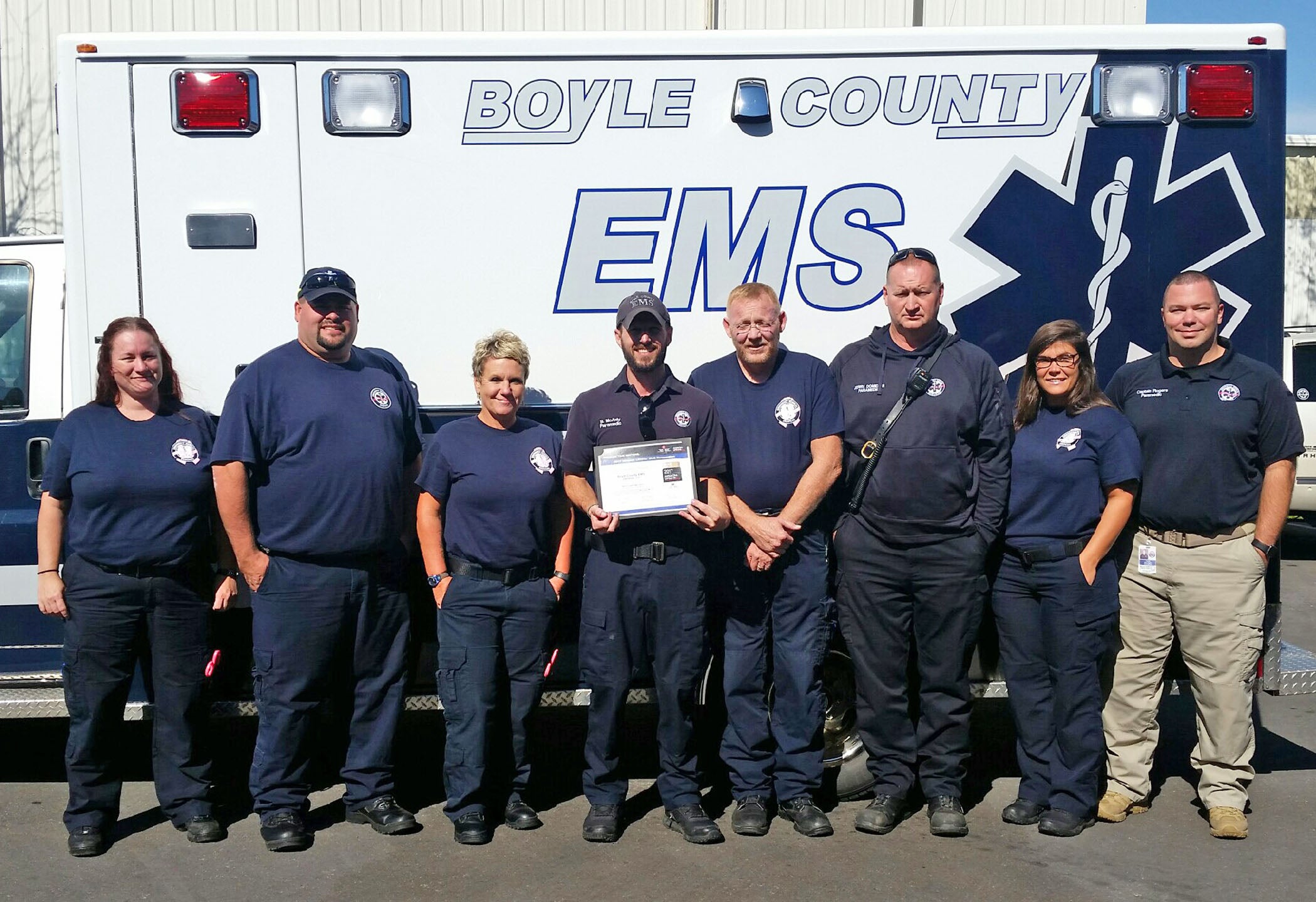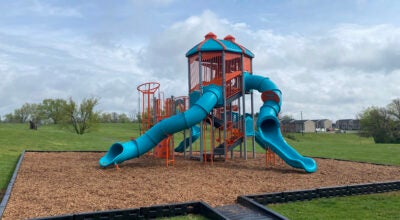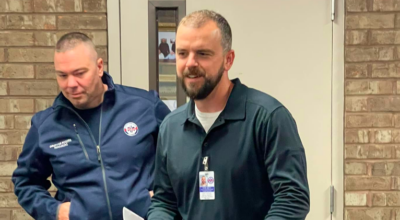Heart smart: Boyle EMS receives award for heart attack responses
Published 3:17 pm Friday, October 20, 2017

- (Photo by Kendra Peek/kendra.peek@amnews.com) The Boyle County EMS recently earned the American Heart Association’s Mission: Lifeline EMS Gold Award, for reaching and exceeding benchmarks involving cardiac arrest. Thursday's shift, from left: EMT Amanda Taylor, Paramedic Anthony Godbey, Paramedic Capt. Karen Statom, Paramedic Rick Mitchum, Paramedic Ben McAnly, Paramedic Jerry Domidion, EMS Lyndsey McGirr and Capt. Mike Rogers, education coordinator for the Boyle County EMS.
It’s more than a standard of care, it’s a recognition of helping people — that’s what earning the American Heart Association’s Mission: Lifeline EMS Gold Award means to the Boyle County EMS.
It was around 2014, said Capt. Mike Rogers, education coordinator for the Boyle County EMS, that they began looking at the numbers, trying to figure out where the agency stood on heart attack patients.
Unfortunately, he said, the documentation was lacking.
“If you call 911 with chest pain, the tool everyone is used to using is called a 12-lead, putting all those leads on you. We had been doing that a long time, but we weren’t good about documenting that we did,” Rogers said. “In 2014, like 40 percent of those calls received 12-leads. But we knew, that’s not right.”
They streamlined the process and started making sure that everyone who needed the 12-lead was getting one — although Rogers said there are certain instances when it is sometimes deemed quicker to transport the person without doing so, such as someone at Arnold Towers or in the area immediately surrounding the hospital.
The crew also started making sure that every time the leads were used they were documented on the run sheets — reports written up after every call.
Rogers said it was important to note that a myocardial infarction, or heart attack, was different from a cardiac arrest.
“If you have chest pain, that’s a possible heart attack. A cardiac arrest is when your heart stops,” he said.
Rogers said it was also important for people to not try to drive themselves or have someone else drive them to the hospital.
“If you have a (heart attack), and you don’t call911, you have a very high chance for cardiac arrest … If it’s your heart and you’re having chest pains, call911. Let us check you out,” Rogers said. “I would much rather come help you with chest pain than a cardiac arrest — with chest pain, if it is a (heart attack), we have really good survival rates.
“With cardiac arrest, the national average is 10 percent and we’re below that, at like four percent.”
For those having chest pain, Rogers said they can put them on the 12-leads and determine if they are really having a heart attack. If so, a call is made to the Ephraim McDowell Regional Medical Center’s “Cath Lab.”
“That starts a lot of things in motion. If the cath team is not there, they call them in. It lets them get all the doctors where they need to be, all the nurses where they need to be,” he said.
The hospital has two of the labs in place.
The goal, Rogers said, is to get the blockage in the patient’s heart, which caused the heart attack, cleared within 90 minutes. The clock starts when first medical contact (Boyle County EMS) gets on scene, through getting them to the hospital and reperfusion of the heart, restoring blood flow to a patient’s heart, which is vital to saving the organ and the life.
The national average, he said, is 90 minutes.
Rogers said the hospital had done a great job with their cardiac mission, too, which had helped make the numbers better.
“It’s exciting, because we pick up these patients and now it’s almost like a competition between us — we all want the best reperfusion time. And who wins is the patient,” Rogers said.
So far, the “best” time was 33 minutes.
“Again, the national average is 90 minutes. It’s really cool to look at where we came from,” he said.
The time can be impacted by the time of day — it can take 30 minutes to get the lab ready at night, so the patients might have to stop in the emergency room — or if there are other patients in the “cath lab,” which would also require a stop in the emergency room. In those cases, instead of a stint, Rogers said they can use “clot busters” to break up the blockage.
There are three categories agencies can be ranked in: bronze, silver and gold. To reach the gold ranking, they must be in compliance 75 percent of the time with certain achievement measures — Boyle County was above 90 percent, Rogers said. The agency must also have been a gold or silver recipient in previous years and Boyle County had received the silver ranking for two years in a row.
“It’s not me doing this. It’s those crews out there doing it,” Rogers said. “Me showing them what to do, telling them, ‘This is how it’s going to help your patient,’ and them taking it and running with it — that’s where the success comes from.”
There are only 34 agencies in Kentucky that have completed the process and obtained bronze, silver or gold rankings; only nine of those had gold rankings.
SO YOU KNOW
For more information about the American Heart Association’s Mission: Lifeline awards, visit bit.ly/2hPKXYw.






